If you’re a dog owner, you know the feeling of letting your furry friend roam freely in the yard. But did you ever pause to think about what might be lurking in the skies above? Birds of prey, majestic and awe-inspiring, are not just a spectacle to behold; they can pose a threat to small pets. This listicle seeks to shed light on these winged predators. So, leash up your curiosity and let’s delve into the world of avian hunters that could snatch your beloved pooch.
1. Bald Eagles Are More Than Just National Symbols

The sight of a bald eagle soaring in the sky is breathtaking, often evoking feelings of national pride and freedom. But if you’re a small dog owner, it’s worth remembering that these birds are powerful hunters. With a wingspan reaching up to 7.5 feet, bald eagles are capable of diving at speeds of up to 100 mph. It’s not just fish that these raptors feast upon; small mammals, including potentially your dog, can be on the menu. If you live near large bodies of water or open fields, it’s essential to keep an eye on your pup when these majestic birds are around. According to the Star Tribune, bald eagles can carry about a quarter of their weight, which is approximately 2 to 3 pounds.
Bald eagles have incredibly sharp talons, capable of exerting pressure strong enough to cause serious injury. Even if they don’t lift your dog off the ground, an encounter could leave your pet hurt or traumatized. If you’re in eagle territory, consider supervising your dog’s outdoor time or invest in a protective dog vest. While bald eagles are not known to frequently target pets, being cautious never hurts. Remember, these birds are just doing what they do best: hunting to survive. It’s your job to ensure your dog isn’t their next meal.
2. Red-Tailed Hawks: Not Just A Pretty Tail
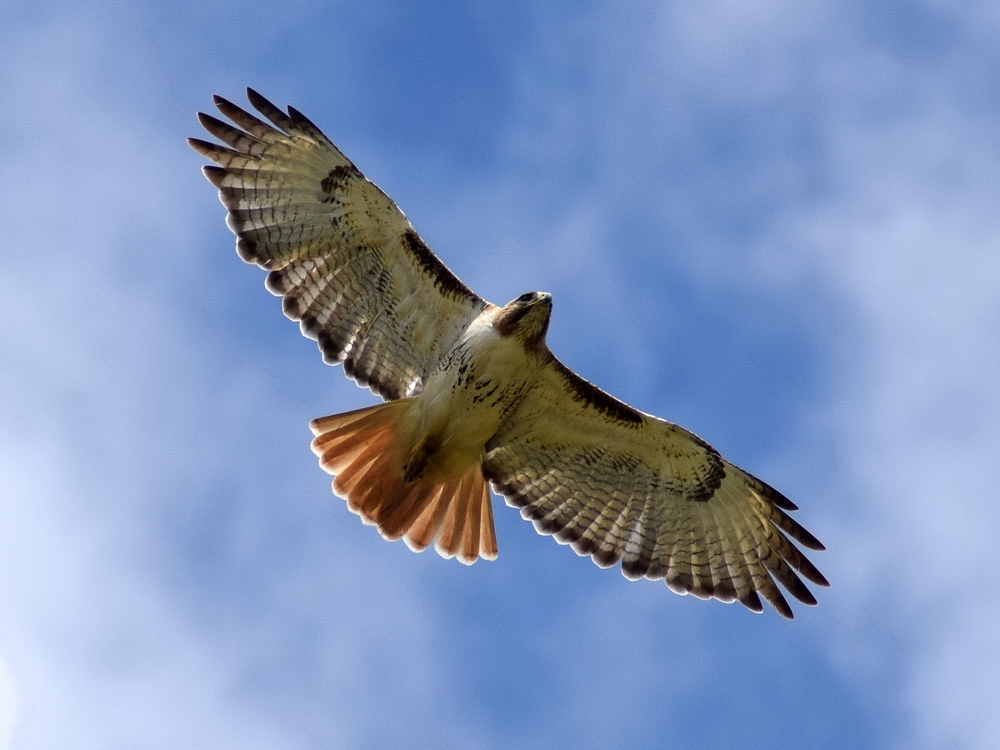
Red-tailed hawks are among the most widespread hawks in North America, often seen soaring high or perched on a roadside post. Their impressive adaptability means they thrive in varied environments—from deserts to cityscapes. For small dogs, these hawks can be a hidden danger, as they’re known for their opportunistic hunting techniques. With a wingspan of up to four feet and powerful talons, red-tailed hawks can easily make off with small animals weighing up to five pounds. Next time you admire their beautiful russet tails, remember they come with razor-sharp skills. According to All About Birds, red-tailed hawks, which are the most common of the hawk species, only weigh between 2 and 2.5 pounds.
These hawks are particularly active during the daytime, which is often when dogs are out playing in the yard. If you notice a hawk circling above your property, it’s wise to bring your pet inside until the coast is clear. And don’t be fooled by their serene appearance; these raptors are skilled hunters. If you’re in an area where red-tailed hawks are common, it might be time to invest in a leash or an enclosed outdoor play area for your dog. Your pet’s safety is always worth the extra precaution.
3. Great Horned Owls: The Silent Hunters Of The Night
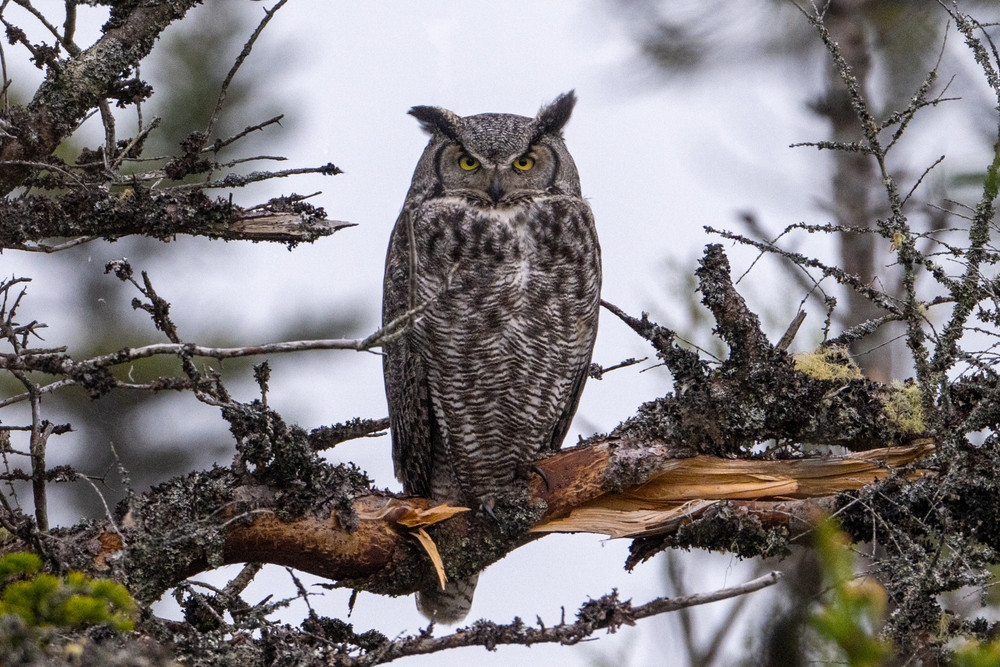
Owls are the ninjas of the bird world, operating under the cover of darkness with deadly precision. Great horned owls, with their iconic tufts and deep hoots, are formidable hunters that can take down prey larger than themselves. If your small dog enjoys nighttime romps in the backyard, these owls might be more interested in their movements than you realize. Their silent flight and powerful talons make them efficient hunters, capable of carrying off animals weighing up to three times their own weight. That’s a lot of muscle packed into a deceptively soft-looking package.
While great horned owls primarily hunt rabbits, rodents, and other small mammals, they won’t pass up an easy meal if it presents itself. If you’re in owl territory, secure your dog indoors during the night or supervise any outdoor activities closely. Motion-activated lights might help deter these nocturnal predators, signaling that the area is not a safe hunting ground. With their keen eyesight and acute hearing, great horned owls are natural-born hunters, but a few preventative measures can keep your pup out of their talons.
4. Golden Eagles: More Than Just A Gold Medal Predator
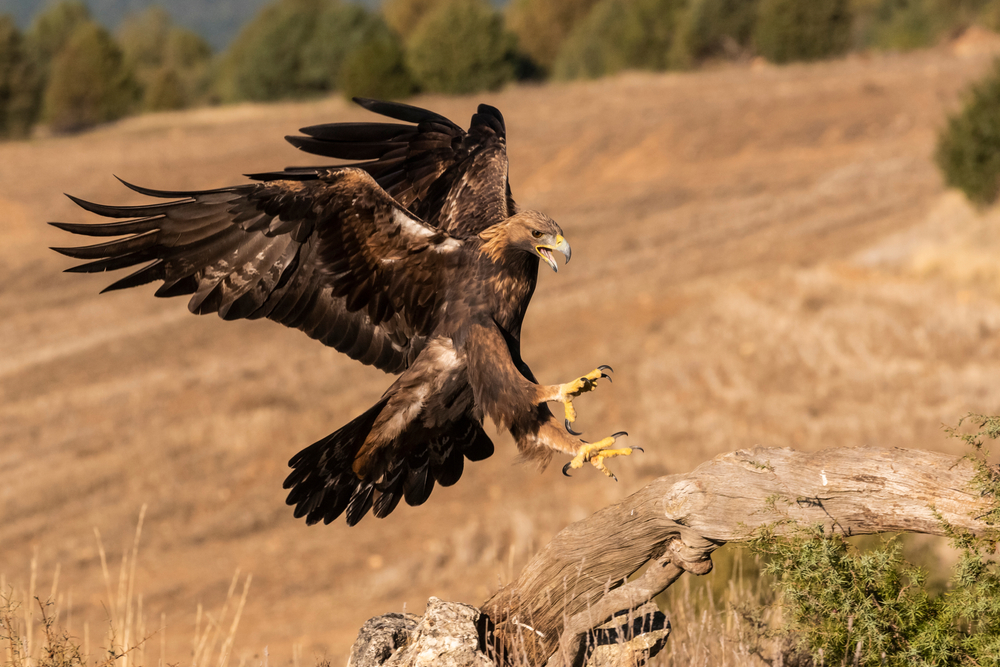
Golden eagles are the apex predators of the sky, capable of taking down prey as large as mountain goats. With a wingspan stretching up to seven feet, they are the embodiment of power and precision. These magnificent birds are not just limited to the wilderness; they can also be found in open rural areas, making small pets easy targets. If your dog weighs less than 10 pounds, they could potentially be at risk. While these eagles typically prefer larger prey, hunger can sometimes make them more adventurous.
Golden eagles possess incredible eyesight, allowing them to spot potential prey from miles away. Their talons are like natural grappling hooks, designed to snatch and carry prey swiftly. If you live in an area frequented by golden eagles, consider installing deterrents like scarecrows or reflective objects to keep them at bay. While it’s a privilege to share the land with such majestic creatures, coexisting means taking steps to protect your pets. Both your dog and the eagles deserve to thrive without conflict.
5. Ospreys: Fish Lovers With A Taste For Adventure
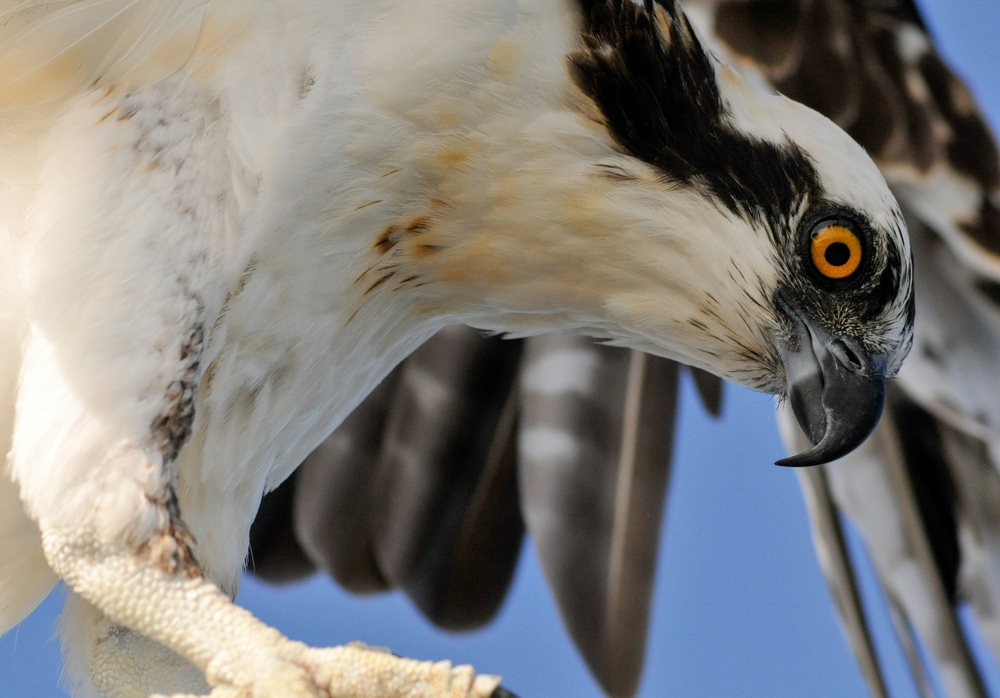
Ospreys are often seen diving dramatically into the water to catch fish, but their hunting prowess doesn’t stop there. Known as fish hawks, they are specialists but can sometimes turn their attention to unfamiliar prey like small dogs if the opportunity arises. These birds are widespread near coastal areas, rivers, and large lakes, where their fishing skills are most needed. If your dog loves to splash around in water bodies, be mindful of an osprey’s keen eye catching their movements from above.
While fish make up the majority of an osprey’s diet, their adaptability means they’re not entirely bound to aquatic prey. With a wingspan of up to six feet, their talons are capable of grasping onto more than just slippery fish. If you live near water and notice ospreys flying frequently, you might want to supervise your dog’s playtime. Keep your pup close and consider avian deterrents to avoid an unexpected aerial encounter. Understanding the hunting habits of these birds helps in protecting your furry family member.
6. Peregrine Falcons: Speedsters With A Sharp Focus
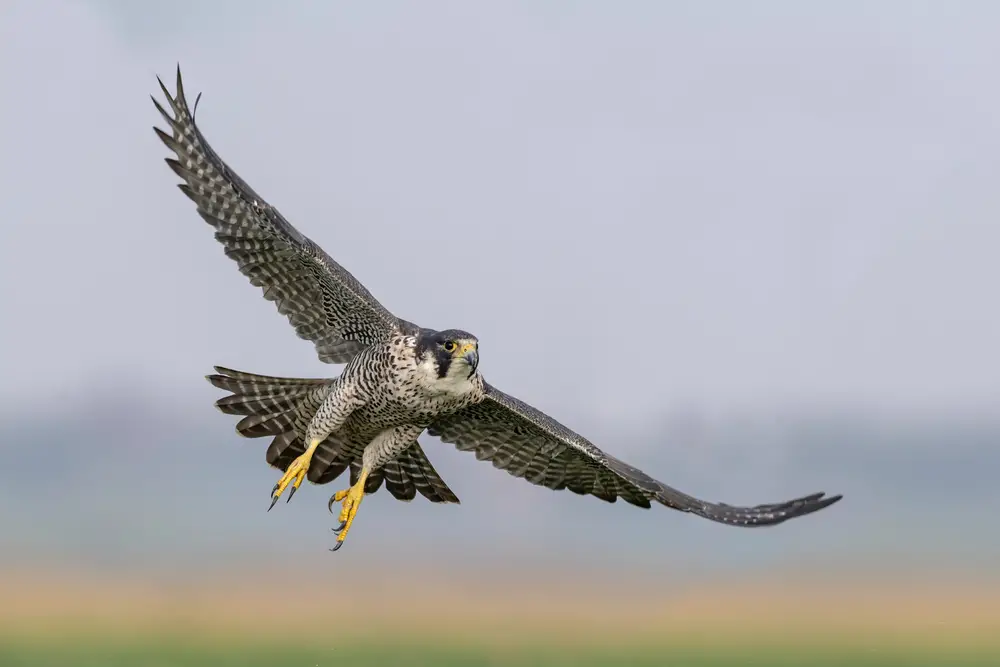
Peregrine falcons are the rock stars of the bird world, renowned for their unmatched speed, diving at over 200 mph during a hunt. While they’re primarily known for preying on birds mid-flight, small terrestrial animals aren’t entirely off their radar. Their adaptability has enabled them to make homes in both urban areas and natural landscapes. This means your backyard could potentially be a hunting ground if your dog fits the criteria of quick and small. With razor-sharp talons and an unparalleled focus, their agility is truly a spectacle.
Though peregrine falcons do not frequently target small dogs, their opportunistic nature means anything is possible. If you notice a peregrine falcon perching nearby, it might be wise to bring your dog indoors. Their presence is often marked by a high-pitch call, alerting you to their proximity. Being the fastest animal on earth gives them an edge in hunting, but also means they’re gone in a flash. Stay vigilant and keep your canine companion safe from these speedy raptors.
7. Northern Goshawks: Woodland Warriors
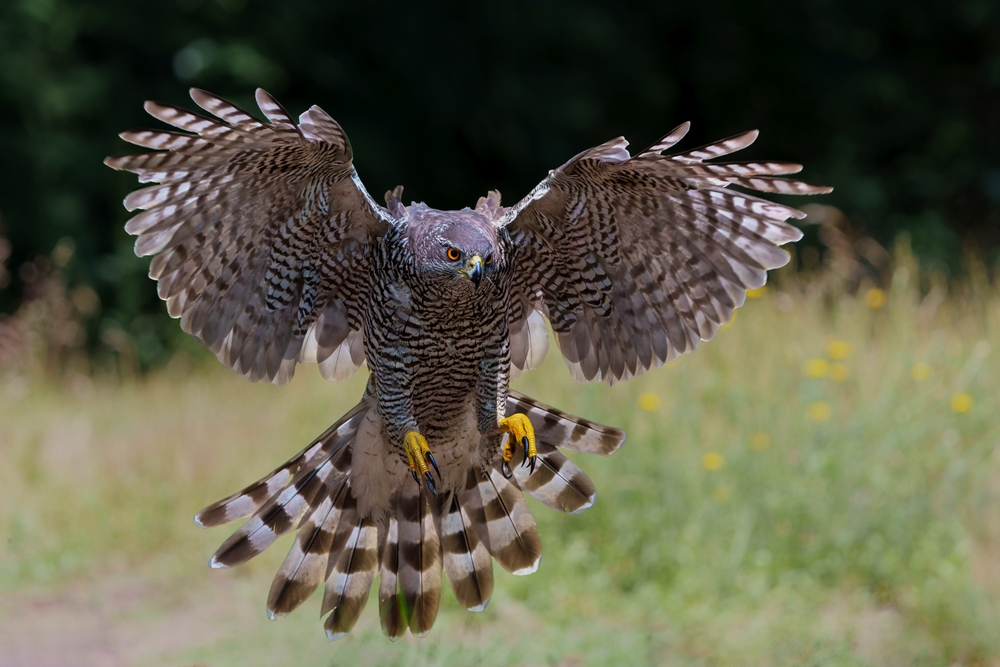
Northern goshawks are the ninjas of the northern forests, skilled at maneuvering through trees at breakneck speeds. With their sharp talons and keen eyesight, they are agile hunters that can pose a threat to small dogs in rural or wooded areas. Their diet usually consists of other birds and small mammals, but a tiny dog could easily attract their attention if spotted. If your home is surrounded by trees and dense foliage, you might want to reconsider unsupervised playtime for your pooch.
These birds are particularly valiant in defending their nests, often attacking anything they perceive as a threat. An unsuspecting dog wandering too close could inadvertently become an unwelcome target. If you live in goshawk territory, be mindful of the breeding season when these birds are most aggressive. Simple measures like keeping your dog on a leash or avoiding certain areas during peak times can help ensure their safety. Understanding the behavior of these woodland warriors is key to coexisting peacefully.
8. Black Kites: Opportunistic Aerial Acrobats
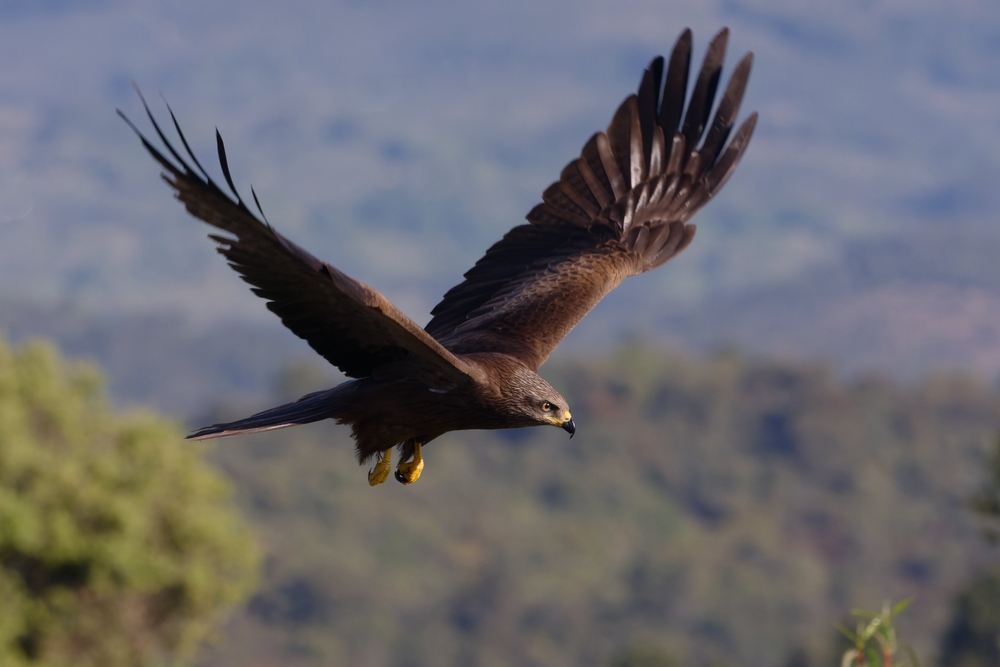
Black kites are opportunistic feeders, often seen gliding gracefully in search of their next meal. While they primarily scavenge, they’re not above snatching live prey if the opportunity presents itself. Found in both urban and rural landscapes, they thrive in diverse environments, making small pets vulnerable to their keen hunting skills. If your dog is small and likes to explore, these aerial acrobats might find them intriguing. Their sharp talons and quick reflexes make them efficient hunters despite their scavenger reputation.
In some regions, black kites are known to swoop down and grab small unsuspecting animals, so keeping an eye on your pet is paramount. Being aware of their presence is the first step in ensuring your dog’s safety. If black kites frequent your area, consider deterrents like kites or flags to keep them away. These birds may be captivating to watch, but vigilance is necessary to protect your four-legged friend.
9. Cooper’s Hawks: Urban Predators With A Keen Eye
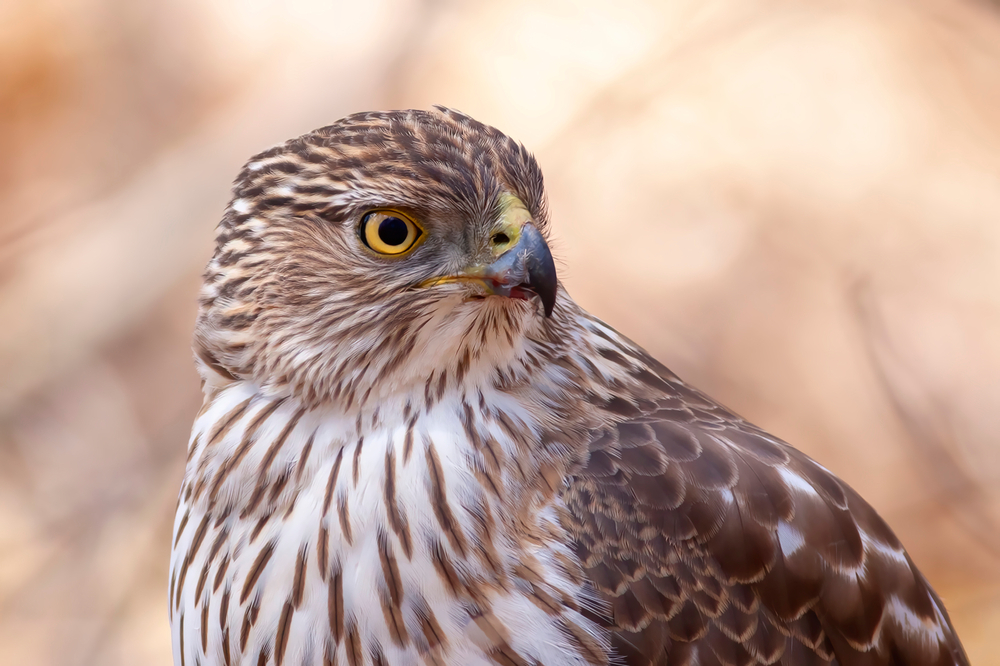
Cooper’s hawks have adapted remarkably well to urban settings, making them a common sight in parks and residential areas. Known for their quick reflexes and agile flight, they are capable hunters that could pose a risk to small dogs. With their focus primarily on birds, a small, fast-moving dog could be mistaken for their regular prey. If you spot a Cooper’s hawk in your neighborhood, be aware of their hunting habits.
These hawks are often seen darting through tree canopies or perched in hidden spots, waiting for the perfect moment to strike. If your dog is prone to chasing birds, this might inadvertently attract a Cooper’s hawk. It’s advisable to supervise outdoor playtime and avoid leaving small pets unattended. Understanding their behavior and taking precautionary measures can help you coexist with these urban predators without any unwelcome encounters.
10. Harris’s Hawks: Team Hunters With A Plan
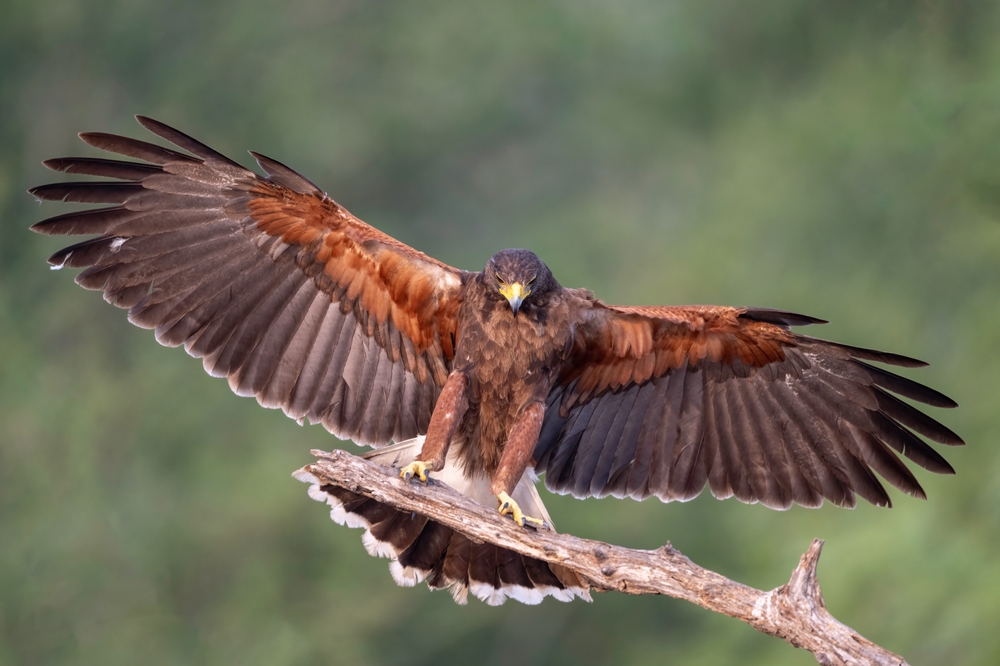
Harris’s hawks are unique in the bird world for their social hunting habits, often working in groups to capture prey. This cooperative strategy makes them particularly effective hunters, capable of taking down larger prey than they could individually. If you’re in the southwestern U.S., where these raptors are more common, be aware of their presence, especially if your dog is small enough to be seen as potential prey. With their collective intelligence and sharp talons, they can pose a threat if the opportunity arises.
While these hawks primarily hunt in arid desert environments, they can adapt to suburban settings as well. If you notice a group of hawks circling or perching nearby, bring your pet indoors until they’re gone. Harris’s hawks are known for their strategic planning and teamwork, qualities that make them formidable hunters. Awareness of their behavior and group dynamics can help you take the necessary precautions to protect your pet.
11. Swainson’s Hawks: Migratory Marvels With Hunting Skills
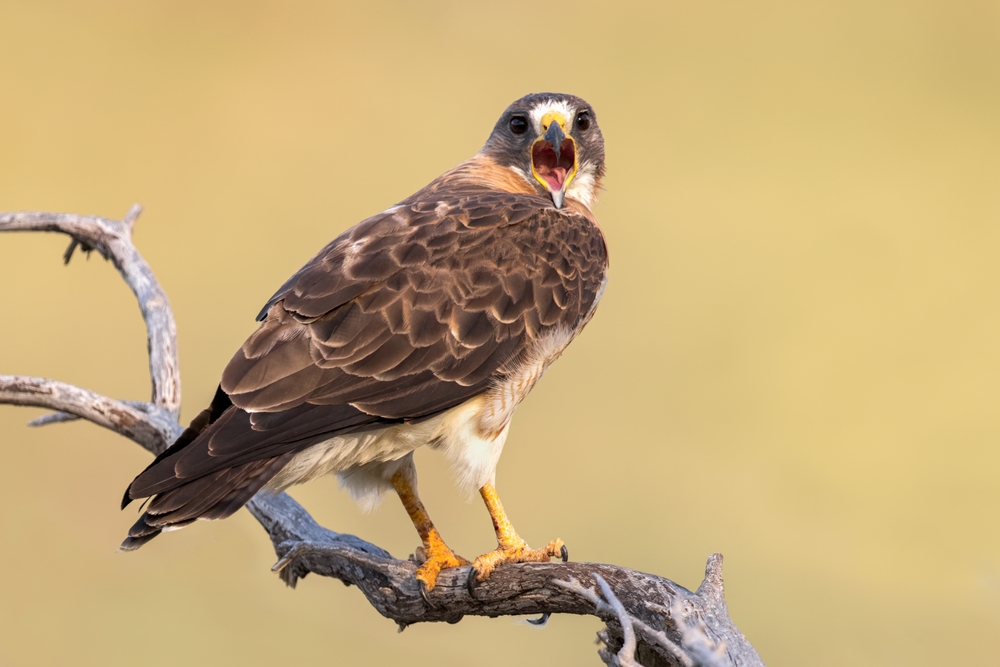
Swainson’s hawks are migratory birds that travel thousands of miles, showcasing incredible endurance and adaptability. These hawks are primarily insectivorous but are known to switch to small mammals when insects are scarce. If your small dog weighs under five pounds, they could be at risk during these times. With a wingspan of over four feet, Swainson’s hawks are agile in flight and efficient hunters, capable of quickly adapting their diet to available prey.
If you live in an area where Swainson’s hawks are common, particularly during migration season, keep an eye out for their presence. These hawks are often seen in open fields but can also venture into suburban environments. Preventative measures like supervision and deterrents can keep your dog safe during peak migration times. Sharing the skies with such remarkable birds is a privilege, but it also means being prepared to protect your furry friends.
12. Ferruginous Hawks: The Giants Of The Grasslands
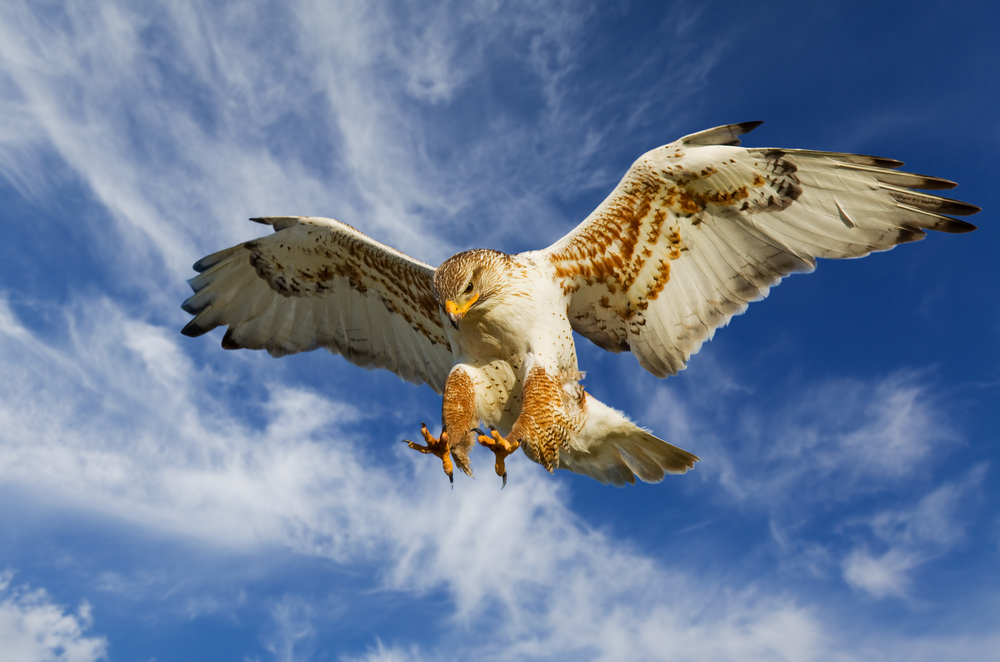
Ferruginous hawks, the largest of the North American hawks, are impressive birds with a wingspan that can reach up to five feet. They primarily inhabit open grasslands and are known for their powerful flight and hunting capabilities. If you live in the plains or desert regions, these hawks could pose a threat to small dogs that venture out into open spaces. Their diet consists mainly of small mammals, and a tiny dog could easily pique their interest.
These hawks are often seen perched on utility poles or soaring high in the sky, scanning for prey. If you’re in their territory, consider keeping your dog on a leash or providing a supervised enclosed space for play. Ferruginous hawks are magnificent to observe, but their hunting prowess requires vigilance if you want to ensure your pet’s safety. Coexisting with these giants of the grasslands involves understanding their behaviors and taking appropriate precautions.
